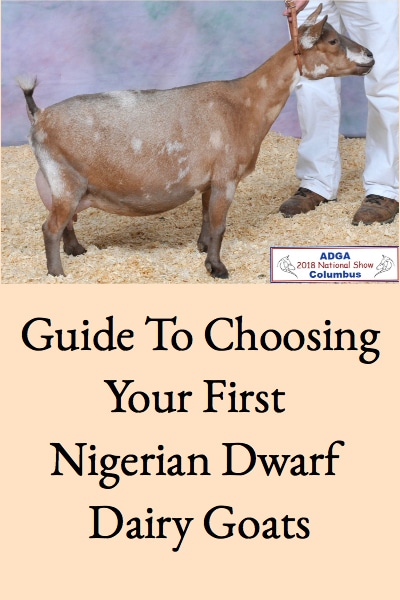
It’s smart to learn about goat anatomy (see this LINK), but even knowing that, it’s hard to recognize how all those parts should best be put together and what types of defects to avoid.
However, there are ways to develop your ability to spot a good goat, identify quality sources for them, and bring home those that will meet your goals.
Strategies for Choosing Your First Goats
Find Reputable Breeders
A reputable breeder can be a valuable asset for choosing your first goats. A good one tries to improve the breed because this leads to more productive goats, higher income, and greater demand.
Therefore, if you explain your goals, a good breeder will try to match you with goats that will both meet your needs and lead to better goats in the future. That’s because the performance of goats you purchase will reflect directly back on that breeder and the pedigrees of the breeder’s herd.
They are also generally willing to help mentor new goat owners because they want to see them succeed and enjoy their goats. Even if a breeder you have approached does not have goats available that would meet your needs, they are often friends with other reputable breeders and will make recommendations about where you might find suitable goats.
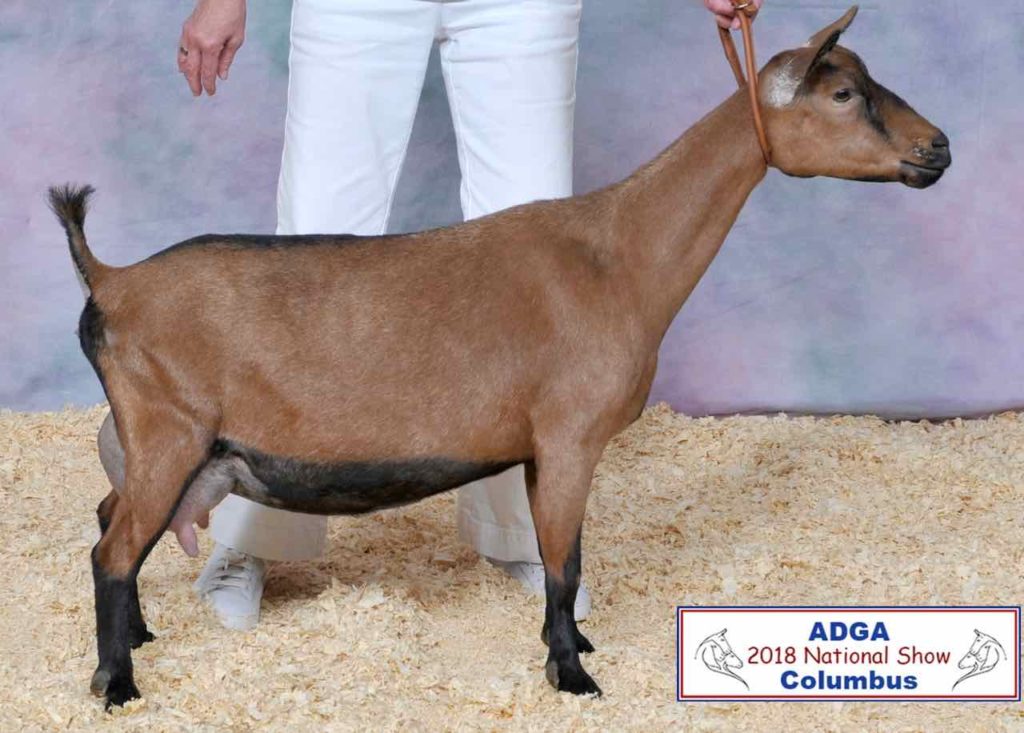
3*M Bramblestone Amethyst *D
Avoid Disreputable Sellers and Auctions
Unfortunately, there are also disreputable sellers that you will want to avoid. It is NOT a good idea to buy Nigerian Dwarf goats from auctions because there is no way to know their history and they often bring hidden diseases or other problems with them.
There are five fatal diseases that can infect goats (see the post HERE), and that can be transmitted through an entire herd by bringing in just one infected goat. It’s important to buy goats from reputable sources that can demonstrate that they have disease-free herds. Buying your first goats only to later find out that they were infected with one of these fatal diseases would be heartbreaking. Therefore, a first priority before choosing your first Nigerian Dwarf goat(s) should be confirming that they are disease-free before you bring them home.
The sections below suggest methods for helping you learn what to look for in a goat, find reputable breeders for purchasing those goats and the items that should be addressed before bringing them home.
Attend Local Goat Shows
One way to start your search for goats is by visiting a few sanctioned local goat shows. They can be a great way to begin both identifying what a dairy goat should look like and finding reputable breeders that may be near you.
When judges place goats in dairy shows, they are required to orally explain the traits that made one goat place higher in the competition than another. By carefully listening and examining the goats as they’re placed, you can begin to train your eye for positive and negative characteristics.
If you have questions, judges or owners are usually more than happy to explain what traits led to one goat placing higher than another after the show. Additionally, by talking with owners, you can locate breeders that may have Nigerian Dwarf goats for sale in your area. Once you identify breeders near you, you’ll find that many maintain websites that provide significant information about their goats. Go to these websites and do some research.
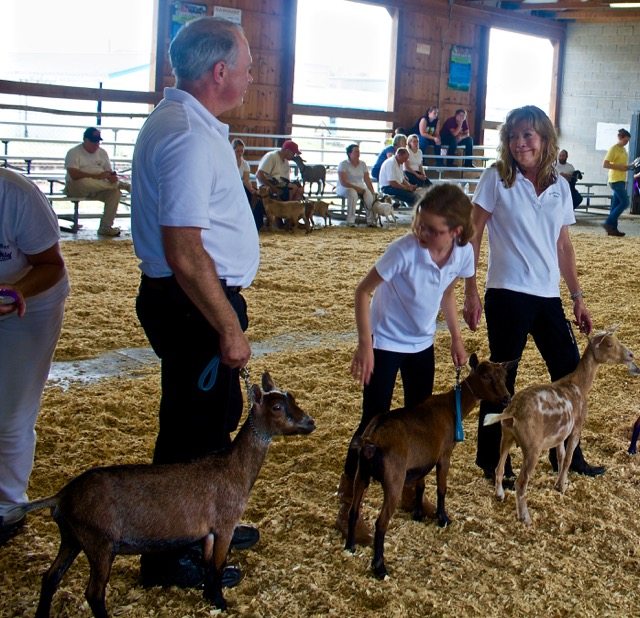
Bramblestone Farm Showing Goats
Visit Nigerian Dwarf Breeders
After finding potential breeders, you can usually make arrangements to visit farms with goats that interest you and observe how their goats are housed, handled, and treated. Before visiting a breeder, you should contact them and identify what you’re looking for as well as arrange a mutually agreeable visitation time.
With the information on what you’re looking for, most breeders will try to match the goats they have for sale (or will have for sale) with your interests. If disease-free goats are important to you, then you should verify that the farm maintains a disease-free herd and has documentation available to support this. When planning a visit, remember to respect the breeder’s time, try NOT to bring children with you but if you must, make sure they will be well supervised and respectful to the goats.
When visiting, the goat housing should appear neat, clean, and not overly crowded. The goats themselves should look curious and healthy. This means they should have soft coats, bright-inquisitive eyes, trimmed hooves, and be friendly. The goats should not appear to be under or overfed (although note that pregnant does can look quite overfed!). It’s important to carefully examine any goats you are considering, and make sure that there are no defects or problems that you can detect.
The breeder should be able to provide you with copies of the pedigrees for any registered goats in which you’re interested and answer any questions you may have about those pedigrees (see Understanding Goat Pedigrees). Remember that through the pedigree, you can usually determine whether the goat you’re considering has the potential for milk production, show quality, and/or the conformational characteristics you’re looking for.
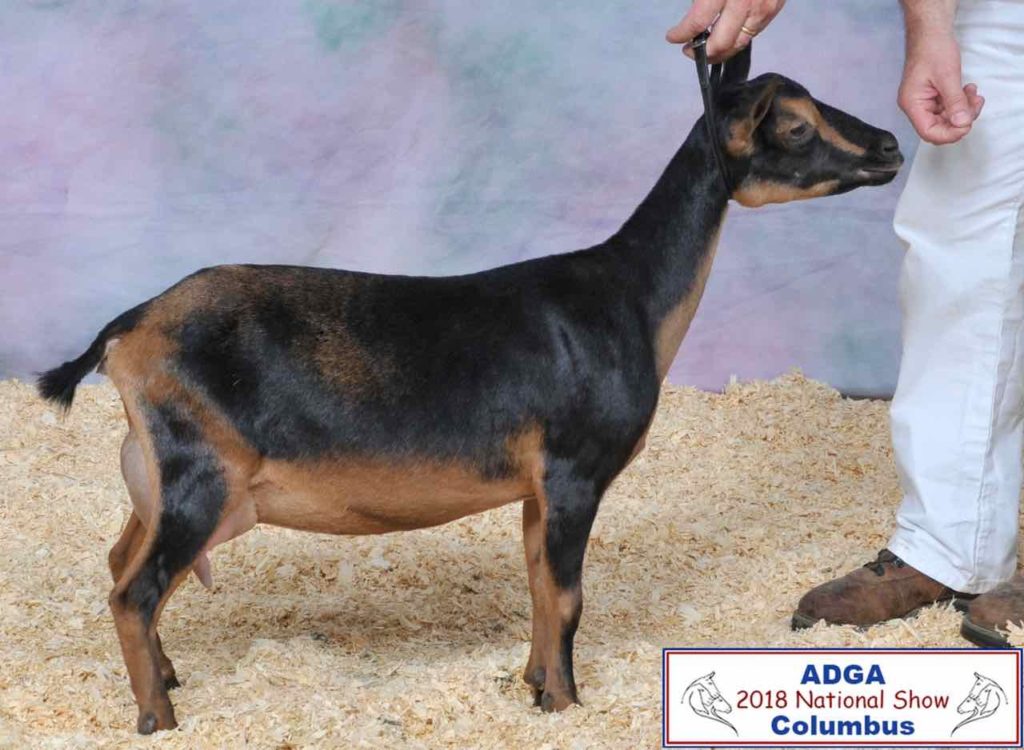
Bramblestone Ostara Quinn
You might also want to ask the breeder for references from others that have purchased their goats. By contacting these references, you can confirm that you are dealing with a reputable source. Before making any final selections, you should make sure that your requirements for the following items will be met:
Goat sex and age: see Getting Nigerian Dwarf Goats Identify Your Purpose
Registration: see Nigerian Dwarf Goats – Registered or Unregistered
Feeding: see Getting Dairy Goats – Dam or Bottle Raised?
Horns: see Getting Dairy Goats – Disbudded, Horned, or Polled?
Milking: see Choosing Nigerian Dwarf Does – Hand or Machine Milking?
Wethering: see Goat Wethers & Urinary Calculi
Finally, determine whether the breeder is willing to provide the level of mentoring you feel will be necessary.
If you feel uncomfortable with the information the breeder has been able to provide (or not), the conditions on the farm, or any aspect with regards to a potential purchase, you should visit other breeders until you are comfortable that any goats you purchase will meet your expectations.
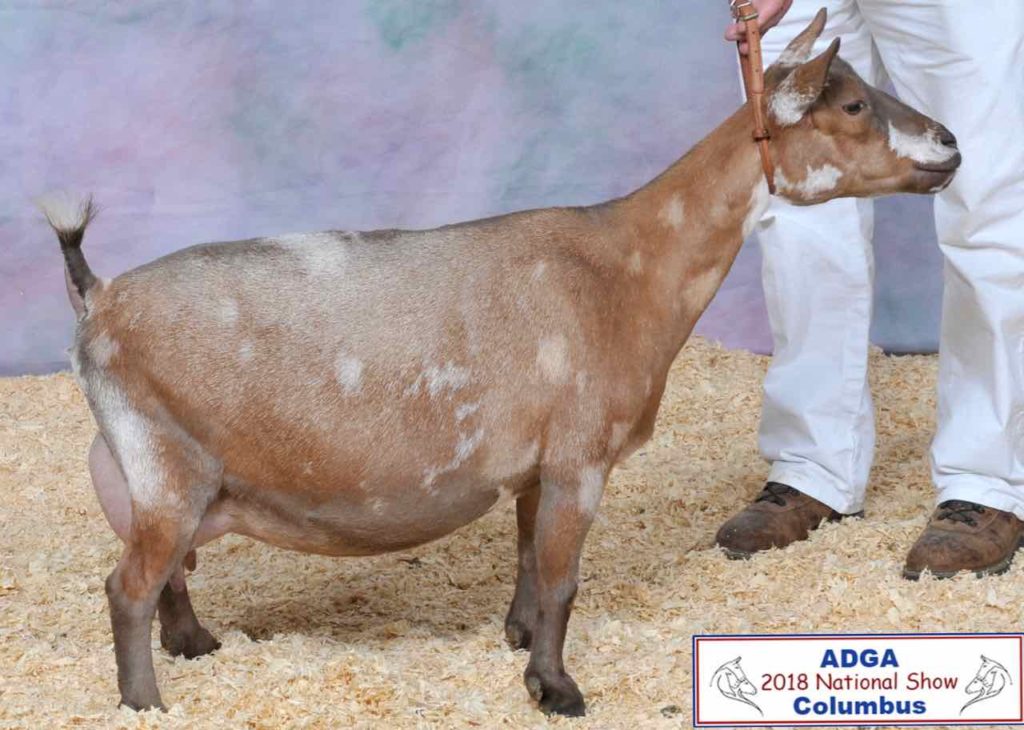
4*M Bramblestone Chai Tea 4*D
Choosing (Reserving) Your First Goats
Many breeders publish kidding schedules each fall (often on their farm’s website) for their planned goat matings so that interested buyers can reserve goat kids in advance. For goats from popular bloodlines and farms with good reputations, these reservation lists can fill up fast. So, if you’re buying doelings or young wethers, it’s a good idea to get on a reservation list once you’ve identified a breeder with goats that meet your requirements. You will probably have to wait a few months before bringing any goats home, but the time can be used to prepare well for those first goats.
Each breeder handles goat reservations in their own way, but many maintain free reservation lists for each of the pairings on their kidding schedule. The pricing for kids is usually identified on the schedule as well as basic policies for purchasing goats. Reserving and purchasing kids is usually handled similarly to the process below.
Potential buyers let the breeder know which pairings they would like kids from as well as the sex of the kids. Breeders then add their names to the list. When the does freshen, the breeders contact those on each list (by the date they reserved) and identify what’s available. At that time, payment (usually around 50%) is collected with the remaining due upon pickup. Once the kids are born and the first payment is made, refunds are not usually granted unless something happens to a kid. In that case, the money is generally refunded or the kid is replaced with an acceptable alternative.

Bramblestone Goat Kids
Address The Details
Once you have selected your goats or future goats, there are a few more things to check before finalizing the purchase and bringing them home. The goats should be up to date on their vaccinations and supplements, properly disbudded (if you don’t want horns), tattooed, dewormed, and treated for coccidia (if necessary), and the hooves should be trimmed.
Finally, if buying registered goats (or young kids that can be registered), make sure to have the registration paperwork in hand before you leave. This is the paperwork that will allow you to register them or to transfer the registration to your name like you would if you were buying a car. You would not leave the car dealership without the title and registration paperwork.
There are too many stories of disreputable sellers promising to mail registration paperwork that failed to materialize once the new owners left the farm. Similar to a vehicle title and registration, if it’s an ADGA registered goat, you should leave with a signed certificate (the one below is unsigned) that looks like the one below. If it’s an AGS registered goat, then you need to get the registration certificate and a signed bill of sale. To transfer the registration to your name, simply mail the certificate or certificate and bill of sale back to the issuing registry along with the transfer fee. They will issue a new certificate identifying you as the new owner within a week or two.
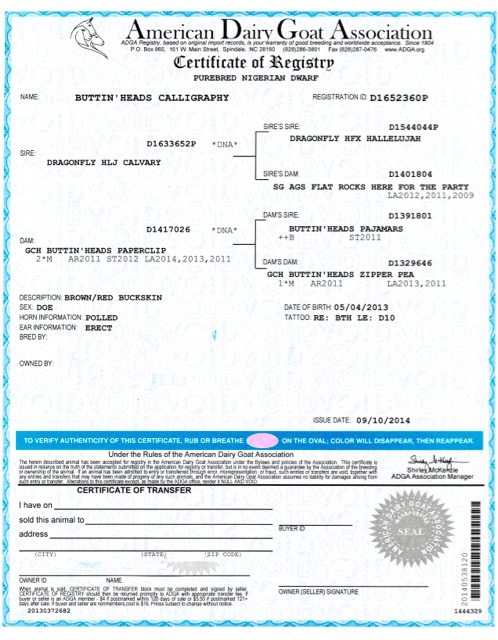
Following the process outlined above can help ensure that your first goats meet your expectations and are an addition that you will enjoy for many years. Good Luck Finding Your Goats!
liz says
I so want to add goats to our farm!!! Thanks for the great tips & for sharing on Homestead Blog Hop!
Ruthie says
I cannot wait to get our first two doelings this year. Great article!